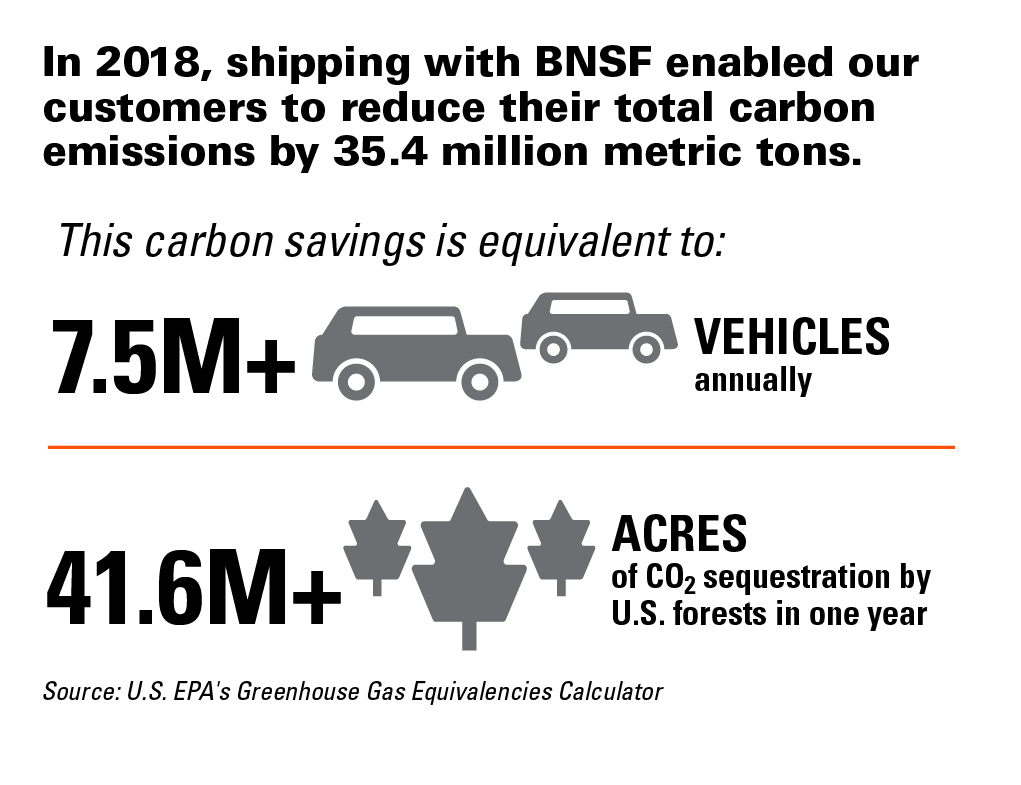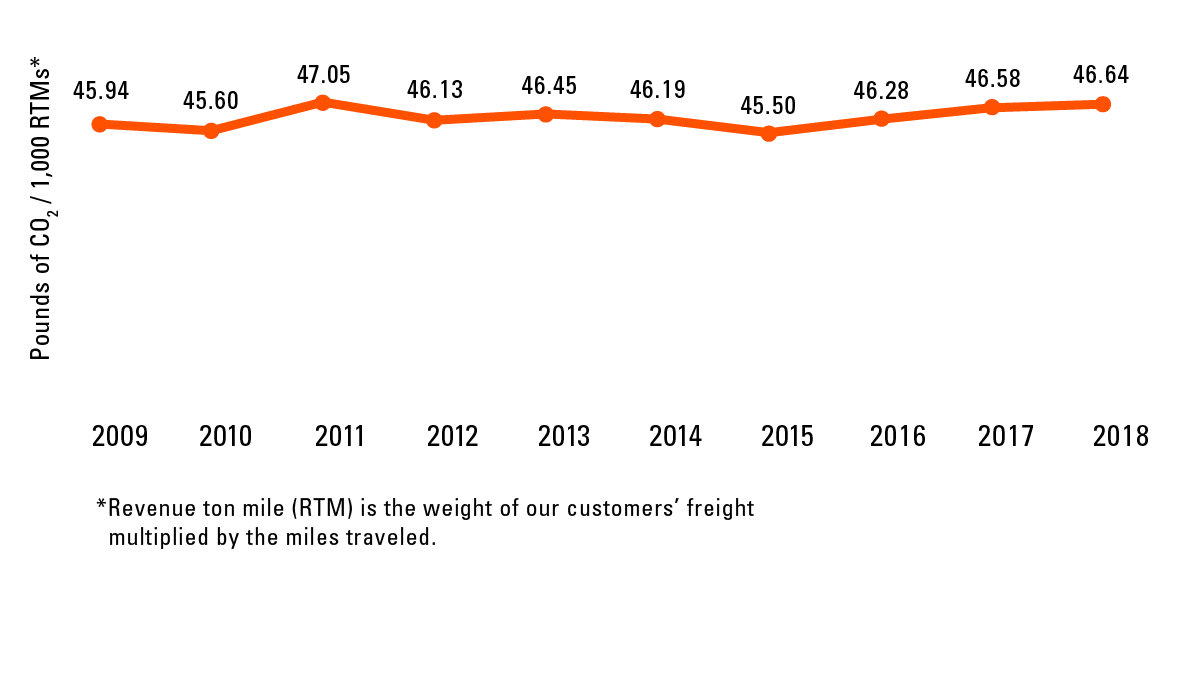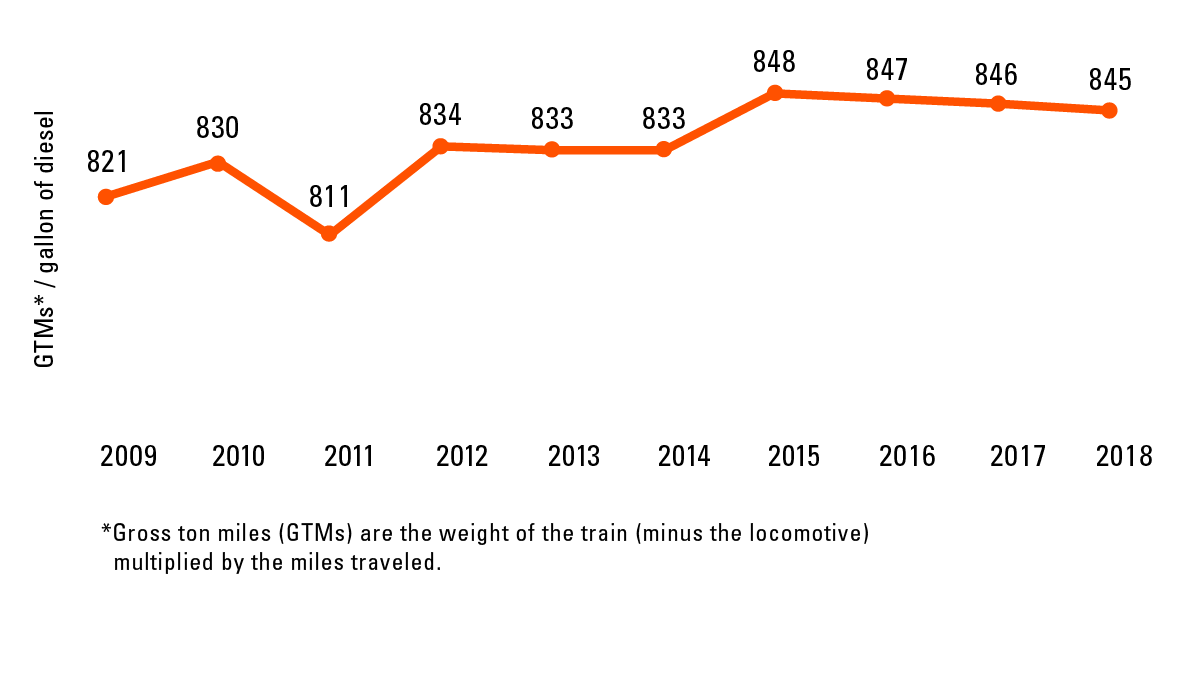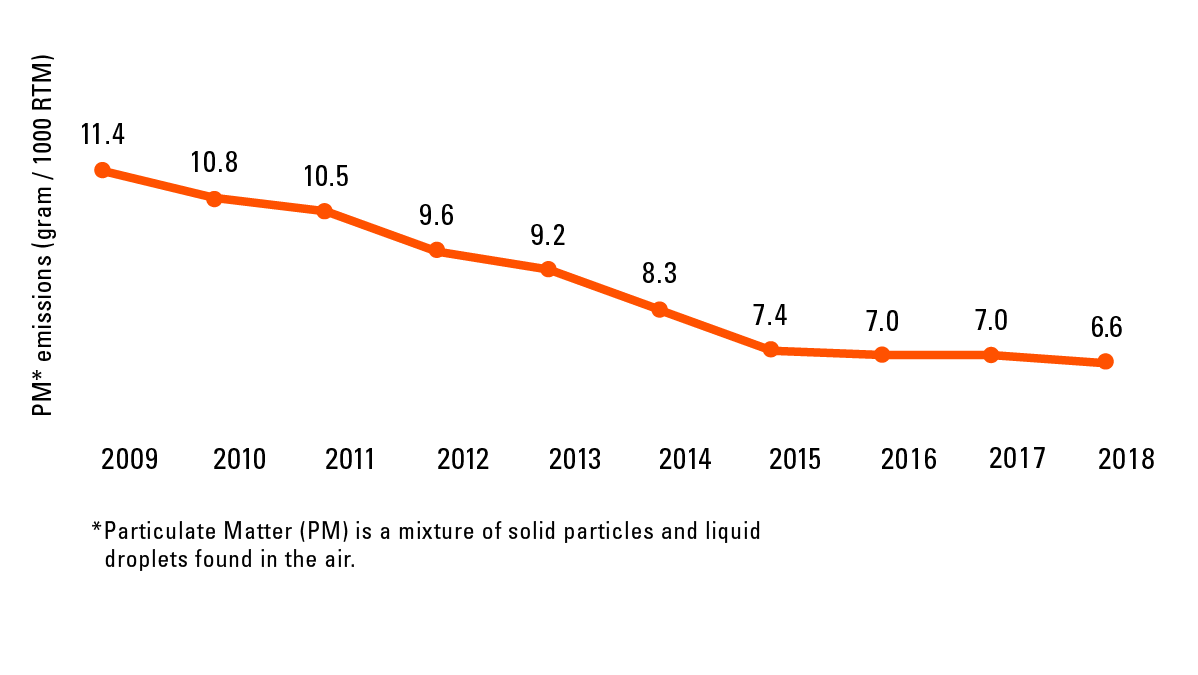ENVIRONMENTAL RESPONSIBILITY
Partnering with our customers and our
communities to become even more sustainable.
THIS IS BNSF
Clean Technology
In order to pilot emissions-reducing technologies in and around railyards, BNSF, along with the San Joaquin Valley Air Pollution Control District, was awarded a $22.6 million grant from the California Air Resource Board. As part of the program, BNSF will partner with Wabtec Corporation on developing and testing a battery-electric locomotive. This innovative locomotive will be tested while paired with diesel locomotives to power a freight train traveling from Stockton to Barstow, California. The battery-electric locomotive is expected to store 2,400 kilowatt-hours of power and could reduce a freight train’s total fuel consumption by 10 to 15 percent.
BNSF also continues to invest in other sustainable technologies, including:
Idle Control
Electric Wide-Span Cranes
Electric Hostlers
Automated Gates at Intermodal Facilities
More Fuel-Efficient Tier 4 Locomotives
Customer Carbon Reduction
By converting their shipments from trucks to trains, BNSF customers are significantly decreasing their carbon footprints. A single double-stack intermodal train removes several hundred long-haul freight trucks from the highway. No other form of land freight transportation is more fuel- and resource-efficient than rail. Rail also provides environmental benefits by reducing our country’s overall transportation emissions and carbon footprint.

Reduced BNSF Emissions
Over the last decade, BNSF has upgraded the majority of our locomotive fleet to more energy-efficient technologies. This helps us increase fuel efficiency and decrease CO2 and particulate emissions. Improvements in operations and maintenance practices also contribute to enhanced fuel-efficiency.
CO2 Emissions from Train Operations

Fuel Efficiency

Diesel Particulate Emissions

Recycling
Recycling efforts further reduce BNSF’s environmental impact. Materials recycled in 2018 included approximately:

Legacy Site Rehabilitation
BNSF is actively addressing environmental impacts at legacy sites – places where predecessor railroads and others may have conducted operations for up to a century. In the last decade, BNSF has rehabilitated approximately 205 sites and invested approximately $470 million toward remediation efforts.
